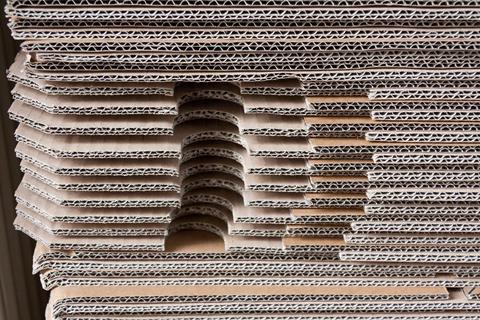The virus that causes COVID-19 spreads through droplets and small particles, but contaminated surfaces of shipping materials may also contribute to outbreaks. Environmental persistence was thoroughly studied at first, but less research has been focused on how long newer, highly transmissible variants remain viable on surfaces.

In Microbiology Spectrum, an open-access journal of the American Society for Microbiology, a team of researchers in China reported their findings on how environmental factors affect the persistence of two different, highly transmissible Omicron variants on shipping materials. They found that viability depends on the type of surface, the temperature and the original viral concentration.
The study could provide guidance for safety practices in the shipping industry.
“Our findings provide initial information to determine the likelihood of objects serving as sources of transmission,” said study leader Bei Wang, Ph.D., from the Institute of Pathogen Biology at the Chinese Academy of Medical Sciences, in Beijing. “For instance, viruses may survive for extended periods at lower temperatures, making it essential to reinforce personal protection and disinfection procedures to control viral transmission during transportation.”
Safe delivery
During the pandemic, as information emerged about routes of transmission and sources of outbreaks, researchers began to investigate whether materials used in transportation might pose a risk. “It was necessary to confirm the stability of viruses on those surfaces to improve a safe delivery process,” said Wang.
Concerns and new questions arose as the virus mutated and infectious variants emerged. Many, like Omicron, are highly transmissible, in part because they can evade the immune response. Omicron subvariants can even infect people who have been infected before by other variants.
Previous studies of SARS-CoV-2 variants have also shown that not every variant remains viable for the same duration on shipping materials, suggesting a link between genetic mutations and viral stability.
“We wanted to consider exploring the mechanisms of the stability of mutations under different environmental factors.”
Testing materials
In the new work, the researchers tested sterilized samples of 4 different materials to measure how long Omicron variants BA.1 and BA.5 would survive at different temperatures. The materials included paper cartons, polyethylene packing film, iron and nonwoven fabric, which is used in shipping for breathable bags, insulated pads for meat packaging trays, fruit liners and other containers.
For seven days, 180 samples of each material, treated with viral titers for the two sub variants, were kept at 4 degrees Celsius (39 degrees Fahrenheit), 25 Celsius (77 Fahrenheit), or 37 degrees (99 Fahrenheit).
At the end of the week, the researchers found that temperature had the most impact on survival, and the virus was most stable, and thus was most likely to persist on the packing material, at the lowest temperature. At the highest temperature, only four BA.1 samples and five BA.5 samples still tested positive.
In general, the BA.5 subvariant persisted on more samples and temperatures than the BA.1 subvariant, suggesting that BA.5 might be more environmentally stable. They also found that the persistence varied by material. On the paper carton, for example, neither subvariant survived for more than 1 day at any temperature. Nonwoven fabric inoculated with BA.5 were most likely to test positive at all temperatures.
The study outlines protocols for safely shipping goods without starting an outbreak.
“The survival time is not as long as we expected at room temperature, so it is generally safe to transport materials at room temperature,” said Wang. In the future, he said, his group hopes to publish similar protocols. “We plan to extend this methodology to include additional organic materials and a range of temperatures.”







No comments yet